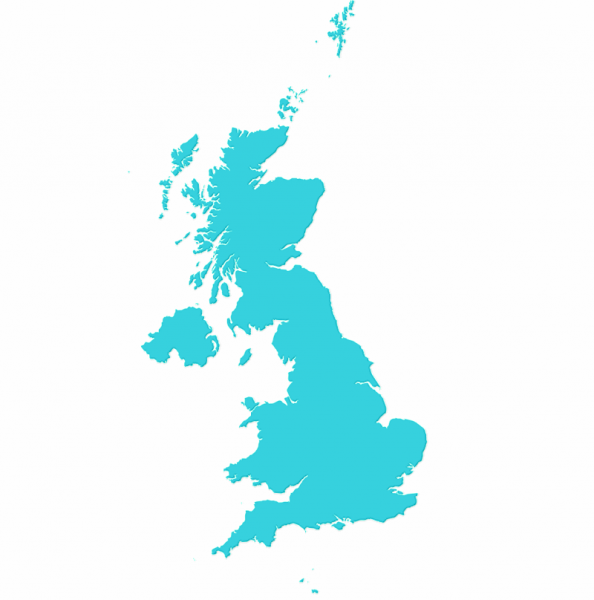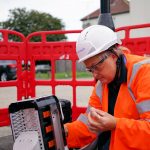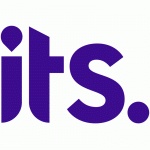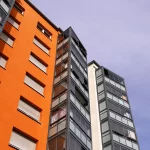H2 2020 Take-up of the UK Superfast Broadband Rollout Project

The Government’s £2.52bn Superfast Broadband Programme (SFBB) has so far helped to extend 24-30Mbps+ capable UK ISP networks to 5,327,128 extra premises since 2012 (up by 33.9K in H2 2020 vs 62.7K in H1 2020) – about 440,000 (our estimate) of these are FTTP – and take-up data to December 2020 shows strong demand.
The following figures reflect the percentage % of premises (homes and businesses) that have chosen to take a 24Mbps+ capable service (usually via FTTC, FTTP or Fixed Wireless Access technology), albeit specifically those which have been delivered via state aid support under the Building Digital UK project (i.e. % subscribed of premises passed).
The data is split between the first two phases of the programme. The most recent contracts have tended to focus on remote rural areas, which since 2018 have increasingly involved deployments of “full fibre” (FTTP) broadband technology to reflect the Government’s changing focus toward “gigabit-capable” services. Prior to that hybrid fibre FTTC (VDSL2) was the most common technology.
Advertisement
We should add that older BDUK contracts defined “superfast” as offering download speeds of 24Mbps+, while recent ones have increased this to 30Mbps+ (this aligns with the definition used by Ofcom and the EU).
BDUK Phases One (Finished Spring 2016)
Supported by £530m of public money via the Government (mostly extracted from a small slice of the BBC TV Licence fee), as well as significant match funding from local authorities and the EU. The public funding is then roughly matched by BT’s private investment. Overall it helped to extend “superfast broadband” (24Mbps+) services to cover 90% of premises in the United Kingdom.
BDUK Phase Two (Technically on-going)
Supported by £250m of public money via the Government, as well as match funding from local authorities, Local Growth Deals and private investment from suppliers (e.g. BT, Gigaclear, Airband, Call Flow etc.). This phase extended superfast broadband services to 95% of premises in time for the end of 2017, but some newer contracts are on-going (e.g. the Welsh Government’s new programme).
Most of these contracts also include a clawback (gainshare) clause, which requires the suppliers to return part of the public investment as customer adoption of the new service rises. The funding from this is being reinvested to further improve network coverage and speeds via extension contracts. Efficiency savings from earlier contracts can also be reinvested, but sadly we don’t have any recent data on that (we think it could be worth c.£300m).
So far it looks as if a total of around £788m could in theory be returned via clawback from BT (here) and a fair amount of that has already been returned. The extra funding has so far helped to raise the UK coverage of 24Mbps+ capable networks to 97%+ (96.6% for 30Mbps+) and it’s still helping. In November 2020, the Government predicted that existing projects (pre-Gigabit Programme) might push superfast cover to 98% (here).

Advertisement
The Universal Service Obligation (USO) mentioned above is a reference to the Government’s new legally-binding pledge to ensure that those in the final c.2% of premises, which may not benefit from BDUK’s effort, can still request a download speed of at least 10Mbps (details here). Sadly, Ofcom’s move to accept 4G as a solution for most of this gap feels like a bit of damp squib due to the technology’s variable nature and some areas are still too expensive to tackle (here).
BDUK Phase One Take-up (Average %)
The following tables break the take-up data down by each BDUK local authority (project area) and devolved region (Scotland, Wales etc.), although for the proper context these percentages should ideally be considered alongside the most recent premises passed (network coverage) data, which can be seen at the bottom of this article. Overall 72.81% of premises have adopted the new service (up from 69.24% in H1 2020).
NOTE: Some counties have divided their deployments into separate contracts. For example, Phase One in Shropshire doesn’t include the ‘Telford and Wrekin‘ area because that is part of a separate Phase Two contract inside the same county. On top of that the contracts were all signed at different times and so are at different stages of development.
| Project Area (BDUK Phase 1) | Uptake % (Dec 2020) |
| Bedfordshire & Milton Keynes | 77.71 |
| Berkshire | 73.52 |
| Bucks & Herts | 79.49 |
| Cambridgeshire | 71.23 |
| Cheshire | 75.09 |
| Cumbria | 71.43 |
| Derbyshire | 69.69 |
| Devon & Somerset | 70.76 |
| Dorset | 70.71 |
| Durham | 69.53 |
| East Riding (Yorkshire) | 73.48 |
| East Sussex | 75.51 |
| Essex | 75.02 |
| Greater Manchester | 67.58 |
| Hampshire | 72.82 |
| Herefordshire & Gloucestershire | 71.16 |
| Isle of Wight | 70.55 |
| Kent | 74.34 |
| Lancashire | 67.73 |
| Leicestershire | 73.95 |
| Lincolnshire | 73.09 |
| Merseyside | 65.64 |
| Newcastle | 68.84 |
| Norfolk | 74.96 |
| North Lincolnshire | 70.46 |
| North Yorkshire | 71.81 |
| Northamptonshire | 76.08 |
| Northumberland | 73.9 |
| Nottinghamshire | 71.77 |
| Oxfordshire | 74.36 |
| Rutland | 76.27 |
| Shropshire | 72.63 |
| South Gloucestershire | 71.86 |
| Staffordshire | 70.34 |
| Suffolk | 73.98 |
| Surrey | 75.06 |
| Warwickshire | 76.93 |
| West Sussex | 77.33 |
| West Yorkshire | 68.64 |
| Wiltshire | 73.83 |
| Worcestershire | 76.38 |
| Devolved Administrations | |
| Highlands and Islands | 71.16 |
| Northern Ireland | 73.97 |
| Rest of Scotland | 67.41 |
| Wales | 68.01 |
BDUK Phase Two Take-up (Average %)
So far in this phase an overall total of 38.73% of premises have adopted the new service (down from 48.54% in H1 2020 – partly due to the addition of R100 etc.). We note that a number of Phase 2 schemes also consist of more than one contract and so you may see several figures being reported for certain areas in order to reflect each of those deals (this is sadly very confusing, but that’s just how they do it).
Advertisement
Both of the recent contracts in Scotland and Wales will also be covered in this table because they have received some funding from the original BDUK programme.
| Project Area (BDUK Phase 2) | Uptake % (Jun 2020) | Uptake % (Dec 2020) |
| Bedfordshire & Milton Keynes | 61.87, 9.7, 8.85 | 65.38, 24.51, 24.19 |
| Berkshire | 31.49, 9.03, 40.38, 7.89 | 35.71, 7.89, 48.95, 13.66 |
| Black Country | 57.46 | 60.24 |
| Buckinghamshire | 0 | 0 |
| Bucks & Herts | 58.42 | 63.77 |
| Cambridgeshire | 3.29 | 7.23 |
| Cheshire | 63.85 | 66.21 |
| Cornwall | 60.61, 33.28 | 65.21, 43.97 |
| Cumbria | 54.46 | 56.77 |
| Derbyshire | 45.91 | 50.28 |
| Devon & Somerset | 8.31, 11.49 | 7.15, 7.54 |
| Dorset | 67.81, 23.3 | 71.19, 37.19 |
| Durham | 59.44 | 63.33, 23.95 |
| East Riding (Yorkshire) | 65.76 | 67.91 |
| East Sussex | 67.83, 8.47 | 72.83, 15.48 |
| Essex | 63.55, 26.61, 5.82, 21.78, 1.9, 13.37, 0, 3.91, 2.28, 0, 0, 0 | 67.49, 33.76, 5.31, 8.72, 34.92, 25.37, 0, 13.68, 15.44, 12.5, 8.64, 0 |
| Greater Manchester | no data | no data |
| Hampshire | 58.55 | 63.85 |
| Herefordshire & Gloucestershire | 37.42, 12.04, 12.38, 8.53, 6.14, 26.14, 41.84 | 46.76, 16.24, 17.45, 16.27, 9.38, 45.37, 60.68 |
| Hertfordshire | no data | no data |
| Kent | 73.56 | 76.08 |
| Lancashire | 53.12 | 56.69 |
| Leicestershire | 58.21 | 62.31, 7.73 |
| Lincolnshire | 55.7 | 59.39 |
| Norfolk | 61.65 | 67.66, 0 |
| North Lincolnshire | 58.17 | 60.39 |
| North Yorkshire | 56.36, 24.27 | 68.9, 30.15 |
| Northamptonshire | 58.96, 11.84, 10.8 | 67.79, 13.16, 14.4 |
| Northumberland | 50.77 | 59.9 |
| Nottinghamshire | 50.42, 49.95 | 58.5, 15.7 |
| Oxfordshire | no data | no data |
| Rutland | no data | no data |
| Shropshire | 65.64, 6.52 | 70.03, 7.11 |
| South Gloucestershire | 63, 25.31 | 66.18, 36.48 |
| South Yorkshire | 59.33, 7.66 | 63.29, 16.8 |
| Staffordshire | 56.19 | 59.79 |
| Suffolk | 62.47 | 66 |
| Swindon | 8.68 | 8.68 |
| Telford & Wrekin | 71.86 | 74.62 |
| Warwickshire | 62.78, 14.58 | 65.3, 25.19 |
| West Oxfordshire | 14.1 | 16.55 |
| West Sussex | 65.96 | 70.85 |
| West Yorkshire | 53.68 | 57.32 |
| Wiltshire | 59.91, 9.78, 34.03 | 63.68, 11.67, 42.53 |
| Worcestershire | 61.8, 19.17 | 66.49, 28.04 |
| Devolved Administrations | ||
| Highlands and Islands | no data | no data |
| Northern Ireland | 50.77 | 57.79 |
| Rest of Scotland | no data | no data |
| Wales | 2.73, 2.58, 2.59 | 15.99, 18.36, 13.29 |
IMPORTANT: Take-up is a dynamically scaled measurement, which means that at certain stages of the scheme it may go up or even down depending upon the pace of deployment (i.e. premises passed in any given time-scale), although over time the take-up should only rise.
Explained another way, earlier phases of the roll-out were easier and faster to deploy, so you could expect to see a bit of a yo-yo movement with the take-up % sometimes falling if lots of new areas were suddenly covered. Some contracts are also younger than others and will thus take time to catch-up. On top of that BDUK’s roll-out pace has slowed to a crawl as it reaches remote rural areas, which will give take-up a chance to climb.
A number of other factors can also impact take-up, such as the higher prices for related “fibre” services, as well as customers being locked into long contracts with their existing ISP (they can’t upgrade immediately) and a lack of general awareness (locals don’t always know that the faster service exists) or interest in the new connectivity (if you have a decent ADSL2+ speed and only basic needs then you might feel less inclined to upgrade).
The fear of switching to a different ISP may also obstruct some services. In other cases the new service may run out of capacity (i.e. demand is higher than expected), which means that people who want to upgrade are prevented from doing so until Openreach resolves the problem, although the scale of this issue is fairly small.
Now, for some context, here’s the latest progress report on related contracts for the same period (this doesn’t show any match-funding from private investment). Take note that this also appears to have included some output from the latest R100 programme in Scotland (under Scottish Government) and new contracts in Wales.
Funding and Premises Passed Progress (BDUK Phase 1 + 2)
| Total BDUK Contracted Funding | Total Local Body Contracted Funding | Current Total Contracted Premises | Delivered to Date (Dec 2020) | |
| Bedford & Milton Keynes | £12,280,000 | £9,443,694 | 52,526 | 52,600 |
| Berkshire | £5,173,250 | £4,603,250 | 41,187 | 35,511 |
| Black Country | £2,988,349 | £2,988,349 | 37,302 | 37,389 |
| Buckinghamshire | £0 | £1,767,716 | 755 | 0 |
| Bucks & Herts | £8,684,767 | £11,415,000 | 92,880 | 91,535 |
| Cambridgeshire | £6,232,000 | £21,895,592 | 112,148 | 107,358 |
| Cheshire | £6,461,000 | £18,214,055 | 86,151 | 82,210 |
| Cornwall | £5,960,000 | £13,631,224 | 14,988 | 15,725 |
| Cumbria | £35,511,855 | £18,134,246 | 121,780 | 122,184 |
| Derbyshire | £12,631,020 | £9,580,000 | 103,046 | 102,725 |
| Devon & Somerset | £42,911,069 | £48,766,010 | 364,252 | 300,046 |
| Dorset | £13,404,088 | £16,051,546 | 81,532 | 78,851 |
| Durham | £7,632,295 | £12,166,000 | 115,790 | 113,525 |
| East Riding (Yorkshire) | £16,601,164 | £8,393,079 | 50,876 | 49,768 |
| East Sussex | £9,460,000 | £13,000,000 | 68,379 | 65,732 |
| Essex | £10,784,755 | £19,296,658 | 156,377 | 142,098 |
| Greater Manchester | £6,512,307 | £5,923,000 | 41,363 | 40,062 |
| Hampshire | £27,370,000 | £14,180,000 | 110,498 | 102,762 |
| Herefordshire & Gloucestershire | £15,410,658 | £34,525,881 | 161,440 | 141,358 |
| Hertfordshire | £0 | £879,471 | 546 | 0 |
| Highlands & Islands | £50,830,000 | £75,600,000 | 152,700 | 152,819 |
| Isle of Wight | £11,463,509 | £2,490,000 | 17,617 | 17,649 |
| Kent | £16,430,000 | £14,998,391 | 144,131 | 140,040 |
| Lancashire | £7,258,895 | £22,540,000 | 147,334 | 145,803 |
| Leicestershire | £18,860,000 | £10,884,318 | 75,149 | 73,775 |
| Lincolnshire | £7,260,000 | £17,910,000 | 143,661 | 136,086 |
| Merseyside | £970,000 | £2,798,448 | 43,905 | 43,966 |
| Newcastle | £15,440,000 | £941,158 | 6,760 | 6,697 |
| Norfolk | £11,813,007 | £26,153,767 | 213,716 | 204,709 |
| North Lincolnshire | £19,418,000 | £2,880,963 | 30,833 | 29,344 |
| North Yorkshire | £14,946,490 | £30,184,726 | 191,113 | 174,494 |
| Northamptonshire | £12,918,046 | £13,009,000 | 80,019 | 77,370 |
| Northern Ireland | £11,454,000 | £186,954,000 | 143,140 | 67,173 |
| Northumberland | £7,500,000 | £12,047,087 | 49,620 | 49,361 |
| Nottinghamshire | £7,410,000 | £10,288,644 | 69,316 | 68,708 |
| Oxfordshire | £4,944,500 | £20,045,470 | 79,103 | 79,067 |
| Rest of Scotland | £50,000,000 | £107,575,000 | 587,362 | 590,432 |
| Rutland | £9,474,257 | £1,670,000 | 7,175 | 9,903 |
| Scottish Government | £20,990,000 | £571,139,073 | 123,907 | 56 |
| Shropshire | £10,704,690 | £12,722,000 | 68,923 | 67,462 |
| South Gloucestershire | £7,320,000 | £3,521,123 | 20,044 | 20,233 |
| South Yorkshire | £9,610,239 | £13,598,577 | 103,290 | 98,742 |
| Staffordshire | £9,620,000 | £7,587,242 | 80,725 | 81,245 |
| Suffolk | £26,940,000 | £28,304,629 | 131,832 | 126,819 |
| Surrey | £1,310,000 | £19,020,081 | 79,193 | 79,263 |
| Swindon | £928,882 | £950,000 | 19,958 | 17,010 |
| Telford & Wrekin | £2,157,000 | £1,843,000 | 8,653 | 8,698 |
| Wales | £69,040,000 | £210,589,237 | 754,921 | 716,013 |
| Warwickshire | £17,376,786 | £14,509,344 | 69,131 | 64,011 |
| West Oxfordshire | £1,600,000 | £1,556,675 | 4,788 | 4,155 |
| West Sussex | £5,695,000 | £7,510,000 | 53,758 | 54,229 |
| West Yorkshire | £13,651,243 | £18,024,540 | 100,368 | 99,154 |
| Wiltshire | £8,739,827 | £16,496,000 | 82,048 | 77,614 |
| Worcestershire | £8,387,032 | £11,403,641 | 63,830 | 63,589 |
| £738,469,980 | £1,782,600,905 | 5,761,839 | 5,327,128 |
The above figures only include 24Mbps+ capable premises in BDUK intervention areas.
Mark is a professional technology writer, IT consultant and computer engineer from Dorset (England), he also founded ISPreview in 1999 and enjoys analysing the latest telecoms and broadband developments. Find me on X (Twitter), Mastodon, Facebook, BlueSky, Threads.net and Linkedin.























































It’s amazing just how wrong the BT/OR estimates of uptake were. Was it 20%,30%?
In my county (Oxfordshire) you regularly see taxpayer funded FTTC cabs in cities and towns like Oxford and Henley-on-Thames. Uptake is 76% in Oxfordshire.
Yes, clawback will reclaim some of this money, but remember this every time an OR employee states in the comments here that an area is ‘not commercially viable’ and that people should start a community funded project. BT isn’t a charity.
I’m very glad that the altnets are lighting a fire under BT and that Gavin Patterson is gone. Some of us have no choice of broadband provider due to our rural location.
You’re lucky to have your own county, for some reason Somerset is reported as an enclave of Devon! Maybe so CDS can massage their figures somehow.
The BT Group gambit on the rural upgrades has been a huge miscalculation at the expense of Openreach and a much delayed upgrades in rural.
Although Mark keeps reporting that the Capital Deferral is paid or utilised, there is no information in the public domain to suggest this is true. NAO in October pointed to £900m in a revised definition of clawback.
It is coming good after 8 Parliamentary inquiries but we still have no proper reconciliation of who paid what and when. With 434k premises outstanding and under contract on completion this will takes coverage beyond 98%. With monies outstanding another ~500k English properties and some ~30k Welsh properties can be contracted using the monies owed.
Let’s hope the Boris election promise does not get in the way of completing these works. The private sector can invest in overbuilding FTTC as OR has already done in Salisbury including overbuilding some 14 subsidised cabinets that BT Group thought needed gap funding.
DL
what you are forgetting is most of those cabs would have been expensive to cover, not be many premises and pay back would have been over 15+ years and the only income you get is line rental every month, , so if it was your business please invest X money you might break even in 15 – 20 years and you might get some good take up or poor take – , we dont know
the take up you refer is based over contract wide non on individual structures (so some will have done better than expected meaning some will not and some might never break even
altnet also has the benefit of actually getting all the rental as well so get all of the revenue as well – which is not the same as a commerical wholesale model
NGA
Sailisbury as you will know was a trial of fibre only exchange using FTTP (you can imagine why salisbury was chosen) and it was nothing to do with some FTTC cabs being enabled as part of BDUK some 5 or 6 years previous
this is trying create conspiracy theory again . Remember that any BDUK cabs would have been match funded by Openreach (another thing you tend to forget) andf those cabinet would have also been included into the Gainshare
Fastman .. conspiracy? – read the footnotes in your own accounts and the latest NAO report. There is no evidence of when the gap funding was deployed. ‘Operational clawback’ has been invented to now describe the BT Capital. OR separation and 8 Parliamentary inquiries and still no admission of the sub-optimality. ex BT Group executives running these upgrades are now raising money to complete with BT.
Fastman, I think that you’ve made my point quite well. OR isn’t a cluster of micro companies that needs to justify each cab in its own right. It’s a national company that serves the whole company and is getting subsidy from the government on a national level.
Just because some rural cabs serve fewer properties doesn’t mean that they should be ignored. You don’t make the opposite case: e.g. “city cabs are so lucrative that line rental should lower there”. The picture should be national (or in this case county-wide). The densely populated areas cross-subsidise the sparsely populated areas.
Rural areas use less electricity than cities, but we don’t expect to pay lower elex prices.
Sorry, that should have been “serves the whole country” (not company)
Also, I reiterate my initial point: BT/OR fundamentally and severely didn’t understand the market demand. Compare their estimate of demand (30-ish%) vs actual demand 76%. A real sign of a company with (in many areas) no competitors.
Why doesn’t the scheme specify the upload speed? This really matters, if you’re running a business you’re sharing documents, or producing marketing videos, not streaming netflix!
How do I get one of these grants to get better for mine and my son’s business?
I live in semi rural Cambridgeshire, with a long phone line. FTTPod is available buy would cost 6k at least extra in the first year.
The 5megabits/sec uplink we have is a real problem at times.
All this money spent on getting fiber broadband for the majority and I still cannot get fiber in rural Lincolnshire.
I can see the fiber cabinet from my house which was installed in 2018 and just left to sit there. If it wasn’t for 4g we wouldn’t be online as the ADSL was So bad I had to cancel it.